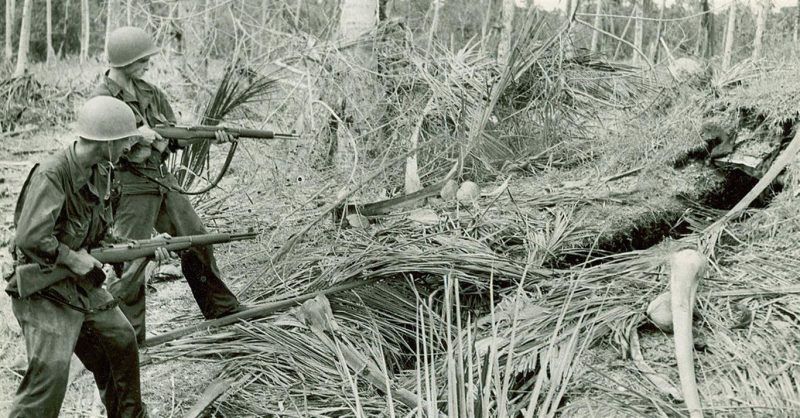Charles Tennyson is looking for a bunker in a haystack, so to speak.
At Port Stephens in Australia’s New South Wales Hunter region, Tennyson has pursued a 20-year journey to locate what he believes is a secret WWII United States military bunker at Fly Point, Nelson Bay.
His interest was piqued years ago while listening to his mother-in-law recount stories of living in Port Stephens during the war.
He received permission for the project by the local council, and plans to start excavating an area of the parkland where he thinks the three-storey bunker lies beneath the surface, which was filled in and abandoned by troops at the end of the war.
There is some pressure since there is a concern that if contaminants are inside, they could affect a protected marine park that is within meters of the location.
During the Second World War, the United States and Australian militaries constructed bases at Port Stephens, an area steeped in military history.
The site was viewed as a strategically important port, with towering heads that served as a gatehouse to shield the country’s largest steel-producing works in Newcastle.
Tennyson said his mother-in-law, Cecily Haddock, grew up at Little Beach. She recalled that all of a sudden the US Navy was in the harbor.
The family next door fled in fear, but Tennyson’s grandmother and family remained.
They were given a password once per week, allowing them to travel down this guarded road, Victoria Parade.
The information about the road protected by a password, bordered by the ocean on one side and scrubby brush on the other, and the purported existence of a tunnel, all prompted Tennyson to take action.
His grandmother said she was able to see trucks coming and going out of the tunnel simultaneously. That’s a big site, he explained.
Tennyson, originally from Illinois in the United States, was joined by his partner Mark Rawson after deciding to find the bunker.
Researching the site has tested his ingenuity since there is a paucity of documented official records.
There is nothing on record pertaining to the site and all the other sites that they are aware of, Tennyson said. This is a black-ops site. Although there is a secret diary that says ‘depot,’ you cannot assume that is what it is.
He and Rawson believe Tennyson’s grandmother. Once they did preliminary drilling, went down 10 feet and hit concrete that broke the drill. There was something there.
Based on circumstantial information they have amassed, and from what official information they have retrieved, Tennyson believes the site could hold a variety of military equipment left by U.S. forces.
There could be jeeps, trucks and boats. There could be multiple drums of oil, fuel and other types of nasties, he said. They have the inventory list of everything that did arrive in Australia. There are no records detailing they actually took the material out to sea and dumped it.
Tennyson said the site bordering a marine park is just outside the tunnel’s door where sponge beds are, so it is very delicate. And to top it off, it is in a park.
He hired archaeologist Darrell Rigby to assist in assessing the site and do scans using ground penetrating radar.
Everyone loves a mystery, and there is a big mystery on this hill, said Rigby. Whether it is there or not, they do not know, but it is a tremendous thing to try. He has also been investigating the site’s past.
A portion of the methodology is attempting to ascertain what is true, what is hearsay, and can they actually detail what it is practically and physically.
Rigby is under no illusions, the search might be fruitless.
Tennyson said there has been no resistance from the Australian or US governments, and final endorsements had mostly been provided.
Excavation of the site will start when a final check of Crown Lands has been granted, possibly in the coming weeks, ABC News reported.
They are going to make an entrance into the bunker just large enough to get in, Tennyson explained, only to investigate. If they can obtain some historical facts for the benefit of Nelson Bay, that is all the better.
It will be gratifying to accomplish that. It will prove Grandma’s story was proven accurate. There are a lot more sites, and Tennyson wants to get to those as well.
